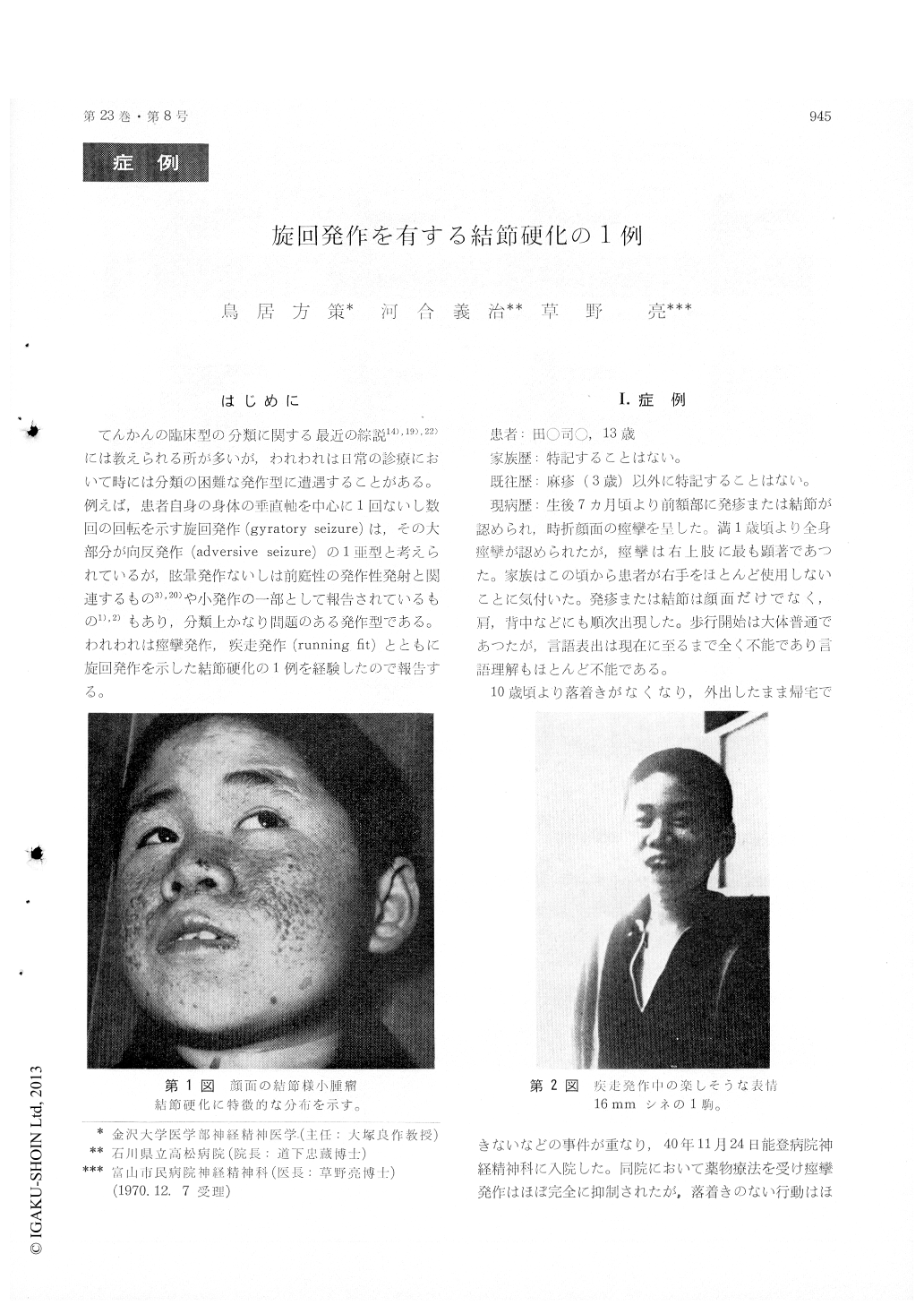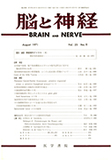Japanese
English
- 有料閲覧
- Abstract 文献概要
- 1ページ目 Look Inside
はじめに
てんかんの臨床型の分類に関する最近の綜説14),19),22)には教えられる所が多いが,われわれは日常の診療において時には分類の困難な発作型に遭遇することがある。例えば,患者自身の身体の垂直軸を中心に1回ないし数同の回転を示す旋回発作(gyratory seizure)は,その大部分が向反発作(adversive seizure)の1亜型と考えられているが,眩暈発作ないしは前庭性の発作性発射と関連するもの3),20)のや小発作の一部として報告されているもの1),2)もあり,分類上かなり問題のある発作型である。われわれは痙攣発作,疾走発作(running fit)とともに旋回発作を示した結節硬化の1例を経験したので報告する。
A male patient, aged 13, suffering from tuberous sclerosis with adenoma sebaceum on the face and other body surface, remarkable mental deficiency, general convulsion and gyratory seizure was des-cribed. On standing or walking, the patient sud-denly showed gyratory movement on the spot. He turned round the vertical axis of his body several or more than ten times. The speed of the gyratory movement was relatively fast : about a turning per second. The direction of the rotation was horary or antihorary. The gyratory seizure was not ac-companied by the deviation of head toward the same direction as that of the rotation and was not fol-lowed by any convulsive phenomenon. The pneumo-encephalogram showed dilation of the both lateral ventricules, particularly of the left anterior and the right posterior horns. In the sleep electroencepha-logram, sporadic spikes or sharp waves were detected in the left or both central cortical regions.
According to the literatures, the gyratory move-ment may appear associated with adversive seizure, vestibular or vertiginous seizure and petit mal or automatic seizure, but the gyratory movement in this case was not typical of any of these seizures. It is suggested, therefore, that this motor pheno-menon in this case would result from two of these factors at least.

Copyright © 1971, Igaku-Shoin Ltd. All rights reserved.


